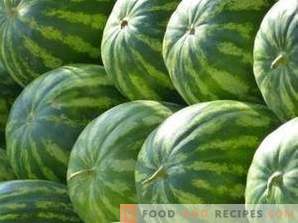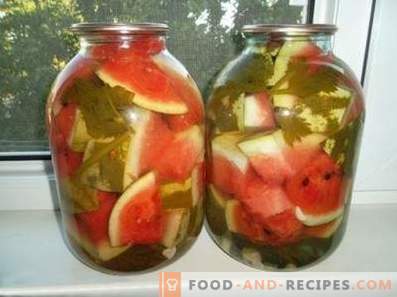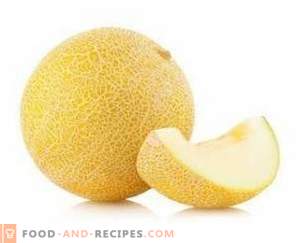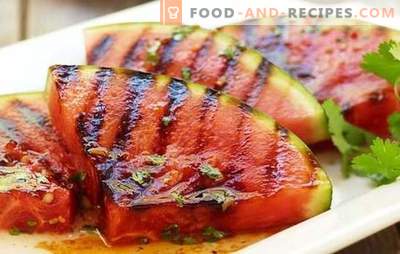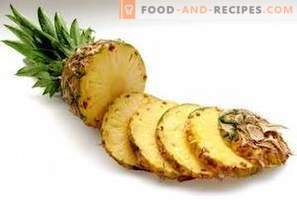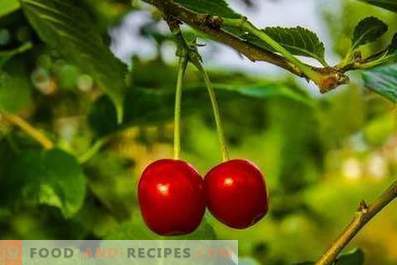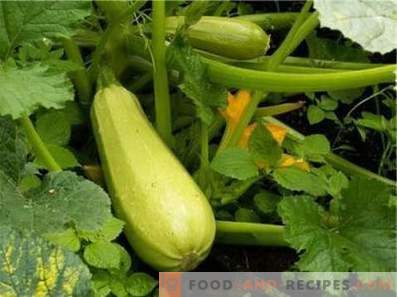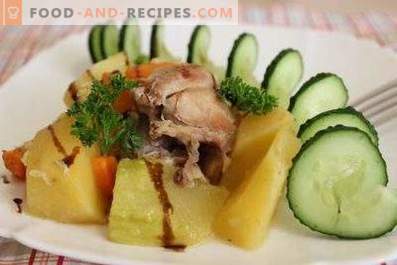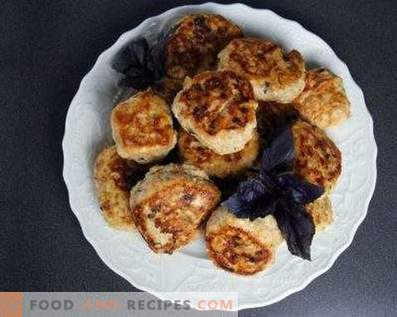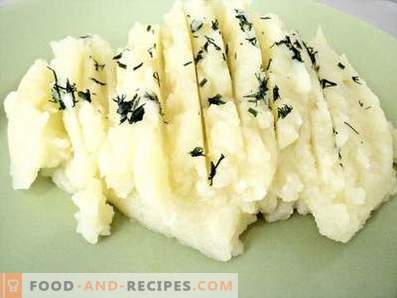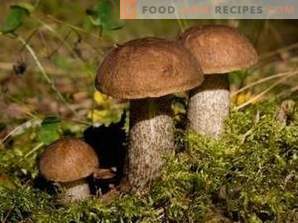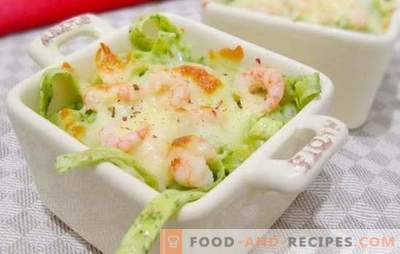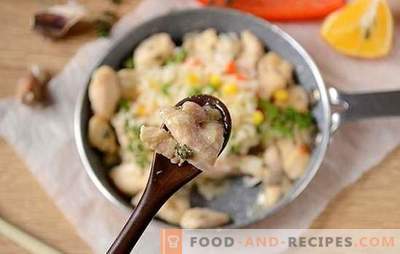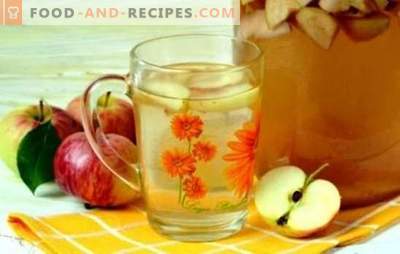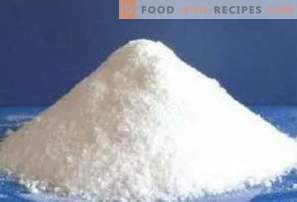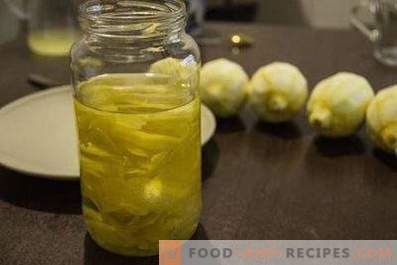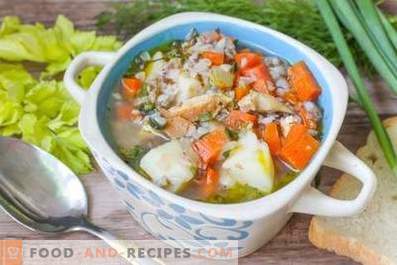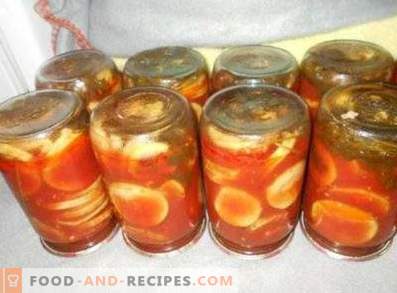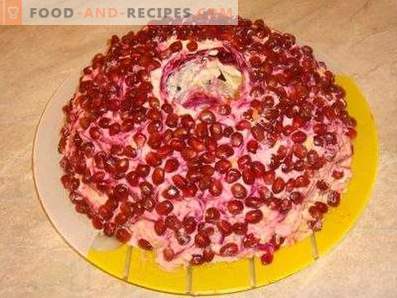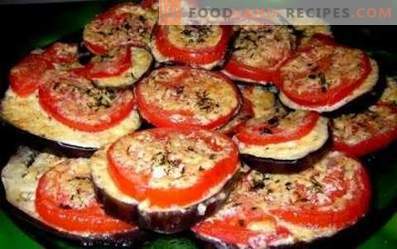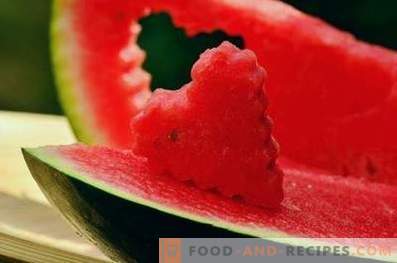
Watermelon - gourd culture pumpkin family. The homeland of this plant is South Africa: it was on the territory of Lesotho, Botswana, Gauteng, Mpumalanga, South Africa, Namibia and other South African states that the ancestors of watermelons and colotsynts (Citrullus ecirrhosus) grew.
Modern science knows the facts that prove that the ancient Egyptians began to grow watermelons in the XX century BC. The seeds of this plant were found in the buildings of the Twelfth Dynasty and in the tombs of the Pharaohs, and the mention of its fruits - in ancient papyrus containing medical prescriptions. There is also evidence that watermelons were an important part of the diet of the ancient Romans. The flesh of their fruit was eaten fresh and salted, they made healthy and tasty honey from it.
By the beginning of the X century, watermelon was widespread in modern China. This culture came to Western Europe later, at the time of the Crusades. Today this plant is cultivated in most states with a Mediterranean or steppe climate, hot long summers and short, not frosty winters. However, the largest producers and suppliers of watermelons to the world market are China, Brazil, Turkey, Iran, Egypt, Algeria and the United States.
Watermelon is a plant with thin pubescent creeping stems up to 4 meters long and a powerful root system. Large heart-shaped three-part leaves of this culture, located on the elongated petioles, can reach 17-18 cm in width and 21-22 cm in length. Flowering watermelons begins 45 days after planting. The fruit of the plant is a large, juicy berry with red, pale yellow or pink flesh and lots of flat seeds inside. To date, several hundreds of varieties of this unique culture have been developed, differing in the size of fruits, their shape, color and taste. Watermelons are eaten fresh, salted, used to make nardek (the so-called “watermelon honey”). In addition, the pulp, crusts and seeds of this culture are used in alternative medicine for the correction of a wide variety of failures in the body.
When buying watermelons on the market should follow a number of rules. In order to choose a truly ripe, sweet and fragrant fruit, you need:
- to remember that the best time to buy watermelons is the end of August and autumn (by this time the fruits fully mature in natural conditions);
- opt for medium-sized fruits (one should not buy too small or, on the contrary, unnaturally large watermelons);
- to remember that signs of ripeness of watermelon are the presence of a dry tail and pale yellow spots on the peel;
- make sure that the skin of the fetus is shiny and firm, and when tapping it, a ringing sound is heard;
- Remember that ripe watermelons float when submerged in water.
Vitamins in the composition of the watermelon and its nutritional value
The pulp of watermelon contains many nutrients: vitamins and other compounds that are biologically significant for the human body.
Nutritional value 100 g of watermelon:
- 0, 524 g of proteins;
- 5, 791 g of carbohydrates;
- 0, 091 g of fat;
- 0, 314 g of ash;
- 92, 344 g of water;
- 5, 736 g of disaccharides, monosaccharides;
- 0, 094 g of organic acids;
- 0, 344 g of fiber.
Vitamins per 100 g of watermelon:
- 16.974 μg of retinol equivalent (A);
- 7, 994 μg of folic acid (B9);
- 0.058 mg of riboflavin (B2);
- 0.093 mg of vitamin E;
- 0, 194 mg of vitamin PP;
- 0, 038 mg of thiamine (B1);
- 6, 974 mg of vitamin C (ascorbic acid);
- 0.093 mg of beta-carotene;
- 0, 299 mg of niacin equivalent (PP);
- 0, 089 mg of pyridoxine (B6).
Energy value of watermelon
Watermelon is a product with a low glycemic index and energy value.
- The caloric content of watermelon (100 g) is 26, 677 kcal.
- The caloric value of one watermelon (on average, about 7 kg) is 1867, 39 kcal.
- Caloric content of watermelon juice - 37, 554 kcal.
- The energy value of canned watermelon is 36,881 kcal.
- The calorie content of candied watermelon peel is 207, 867 kcal.
- Caloric content of watermelon sorbet - 81, 659 kcal.
Useful items in watermelon
The pulp of watermelon contains a whole range of micro and macro elements necessary for normal functioning of the human body.
Trace elements in 100 g of watermelon:
- 0, 989 mg of iron.
Macroelements in the composition of 100 g of watermelon:
- 13, 489 mg of calcium;
- 109, 941 mg of potassium;
- 11, 799 mg of magnesium;
- 6, 994 mg of phosphorus;
- 15, 991 mg of sodium.
Useful properties of the pulp and juice of watermelon
- Watermelon pulp has diuretic properties. Therefore, it is advisable to include it in the diet of people suffering from uric acid diuresis, edema, occurring against the background of cardiac diseases and disorders in the kidneys.
- Dietary fiber is present in the composition of the pulp and juice of watermelons, which have a beneficial effect on the digestive processes, activate intestinal motility, eliminate congestion in the gastrointestinal tract and prevent constipation.
- The composition of watermelon juice contains compounds that contribute to the dissolution and gradual elimination of salts from the body. For this reason, watermelons are useful for people suffering from arthritis and gout.
- The substances contained in the watermelon pulp help remove excess cholesterol and hazardous substances (slag, poisons, toxic compounds) from the body, and cleanse the liver and kidneys.
- Watermelons are a rich source of potassium. Regular consumption of the pulp of these fruits helps to strengthen the capillaries and larger vessels, normalizes the heart rhythm, helps prevent the occurrence and subsequent development of cardiac diseases.
- Substances present in the watermelon pulp and juice increase the supply of oxygen to the brain tissue, thereby improving brain activity.
- Watermelon juice activates the process of excretion of stagnant bile.
- The watermelon pulp contains substances capable of removing stones and sand from the tissues of the kidneys. Nutritionists and physicians recommend that people suffering from kidney disease, daily for 6 days to eat 1, 7-2, 2 kg of watermelon on an empty stomach. The course of treatment must be repeated once a month.
- The compounds present in the composition of the watermelon have a positive effect on the functioning of the hematopoietic system. The fruits of this plant should be included in the daily menu of persons suffering from anemia.
- Watermelon is an excellent natural remedy for psoriasis and eczema. The pulp of the fruit of this plant is applied as cold compresses to the affected areas of the skin.
- Watermelon juice contains anti-aging compounds. It is very simple to prepare a cosmetic mask based on it: it is enough to soak them clean gauze and apply it on the skin for 20 minutes. After the procedure, wash with warm water.
Useful properties of watermelon seeds and crusts
- A decoction prepared on the basis of watermelon rinds quickly removes puffiness. The drug is necessary to drink 400 ml per day.
- Saturated infusion of watermelon peels is an effective means of inflammatory damage to the tissues of the colon. To prepare it, 100 g of dried crusts pour 500 g of boiling water and let it brew a little. The resulting drink try to drink in one day, dividing it into 4 or 5 equal portions.
- Watermelon seeds are used in traditional medicine for the preparation of antiparasitic agents (they are crushed, poured over with milk 1:10, allowed to infuse a little and are taken orally).
- Broths and infusions based on crushed watermelon seeds have an anti-inflammatory effect and are used in traditional medicine to combat inflammatory damage to internal organs, to treat purulent wounds and other injuries of the skin.
- A cosmetic mask is prepared from watermelon seeds, which makes the skin velvety and smooth. The recipe for this remedy is simple: well dried seeds are ground in a coffee grinder into powder and combined with a small amount of water (until a relatively thick mass is obtained). Mask neatly applied to the skin, stand? hours and wash off with warm water.
Contraindications and harmful properties of watermelon
- Watermelons, just like other melons, actively accumulate nitrates used as fertilizers. These substances can cause severe poisoning and other serious malfunctions of the body (especially in babies, pregnant women, in patients with diagnosed kidney disease, and also in nursing mothers). It is easy to recognize a watermelon that was grown with the use of nitrate fertilizers: to do this, it is enough to cut it and check whether there are yellowish threads or seals in its pulp.
- It is undesirable for persons with diabetes to consume watermelon pulp in large quantities.
- Watermelons can cause colic in young children. For this reason, the pulp of their fruit is undesirable to include in the diet of nursing mothers or used as artificial feeding.
